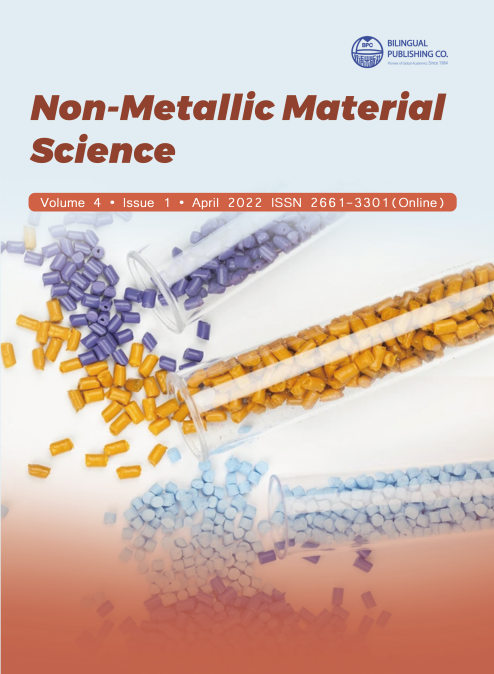-
246
-
239
-
211
-
192
-
123
Electrical Resistivity Survey on Two Waste Dumpsites at Nguru, Potiskum, Yobe State, Nigeria to Determine the Effect of Leachates on Ground Water Aquifer
DOI:
https://doi.org/10.30564/nmms.v4i1.4740Abstract
The research intends to bring out the contribution of leachate on groundwater in two dumpsites in Nguru and Potiskum all in Yobe state, Nigeria. A total of seven (7) and eight (8) VES by Schlumberger electrode with the use of Wenner electrode configuration. The results were interpreted by the use of WinRESIST for VES and IPWIN2INV for ERT. The study pointed out that, the area in question is comprised of four layers of geoelectric such as the topsoil, clay, sand, sandy clay and sand. The range of the first resistivity layer was from 6.16 Ωm to 332 Ωm in the first geo-electric layer and its thickness range from 2.77 m to 37.7 m and a depth range of 2.77 m to 37.7 m. the range of the second resistivity layer was from 16.5 Ωm to 37.9 Ωm which has the range of its thickness from 4.1 m to 10.7 m. The range of the third resistivity layer was from 101.2 Ωm to 288.2 Ωm which has the range of its thickness from 38.9 m to 99.7 m, and the first aquifer in the area. The range of the first resistivity layer was from 100.7 Ωm to 214.3 Ωm which has the range of its thickness from 28.5 m to 94 m. The fifth layer which is the second aquifer and has resistivity from 254 Ωm to 350 Ωm with a very large thickness. The range of the first resistivity aquifer is from 101.2 Ωm to 288.2 Ωm and the range of the second resistivity aquifer is from 253.8 Ωm to 350.1 Ωm. The 2D ERT profiles unveiled areas with low resistant zones and later discussed as zones penetrated by contaminants originated from dumpsites whereas high resistant zones represent areas of low or non-conductive materials in the area. Data obtained from four dumpsites indicated that leachate of the waste dumpsites penetrated into aquifers and polluted the groundwater. The existence of contaminants in the water was noted by a decrease in the formation resistant values. It is seen, from the results of the survey (geophysical) that the water in the area is polluted and it accounts for the prevalence of any disease related to water that are common in the area
Keywords:
Dumpsite; Profile; Resistivity; Leachate; Groundwater contaminationReferences
[1] Abd El-salam, M.M., Abu-Zuid, G.I., 2015. Impact of landfill leachates on the groundwater quality: A case study in Egypt. Journal of Advanced Research. 6(4), 579-586.
[2] Adefehinti, O.A., 2001. Toxicity Testing of Stimulated Leachates of solids waste from Olusosun Landfill, Ojota, Lagos. M.Sc. Thesis, Chemistry Department, University of Ibadan, Ibadan, Nigeria. 1(1), 104-105.
[3] Adefemi, O.S., Awokunmi, E.E., 2009. The impact of municipal solid waste disposal in Ado-Ekiti metropolis, Ekiti State, Nigeria. African Journal of Environmental Science & Technology. 3(8), 186-189.
[4] Adeyemi, O., Oloyede, O.B., Oladiji, A.T., 2007. Physicochemical and microbial characteristics of leachate contaminated groundwater. Asian Journal of Biochemistry. 2(1), 343-348.
[5] Akinbiyi, R., 1992. Improving the urban environment. Africa Health. 15(1), 112-124.
[6] Akpan, A.Y., 2004. Physico-chemical studies on the pollution potential of Itu River, AkwaIbom State, Nigeria. World Journal of Gastroenterology. 5(1), 1-4.
[7] Al Sahabi, E., Rahim, S.A., Wan Zahairi, W.Y., et al., 2009. The characteristic of leachates and groundwater pollution at Municipal Solid waste landfill of Ibb City, Yemen. American journal of environmental Sciences. 5(3), 256-266.
[8] Ali, M.H., Abdel-Satar, A.M., 2005. Studies of some heavy metals in water, sediment, fish and fish diets in some fish farms in El-Fayoum province. Egyptian Journal of Aquatic Research. 31, 261-273.
[9] Allen. A.R., 2001. Containment landfills: The Myth of sustainability. Journal of Engineering Geology. 60(1), 3-19.
[10] Amidu, S.A., Olayinka, A.I., 2006. Environmental assessment of sewage disposal system using 2D electrical resistivity imaging and geochemical analysis. A case study of Ibadan, southwestern Nigeria. Environmental and Engineering Geoscience. 12(1), 261-272.
[11] Aurangabadkar, K., Swaminathan, S., Sandya, S., et al., 2001. Impact of municipal solid waste dumpsite on ground water quality at Chennai. Environmental Pollution & Control. 5(1), 41-44.
[12] Aweto, K.E., Mamah, L.I., 2014. Application of resistivity methods to groundwater protection studies in Niger Delta. International Journal of Environmental Protection. 4(3), 27-35.
[13] Bahnasawy, M., Khidr, A., Dheina, N., 2011. Assessment of heavy metal concentrations in water, plankton, and fish of Lake Manzala, Egypt. Turkish Journal of Zoology. 35(2), 271-280.
[14] Barber, W., Jones, D.G., 1958. The Geology and Hydrology of Maiduguri, Bornu Province. Geological Survey of Nigeria. (1), 5-20.
[15] Daskalopoulos, E., Badr, O., Probert., S.D., 1998. An integrated approach to municipal solid waste management. Resources Conservation & Recycling. 24(1), 33-50.
[16] David, O.M., Akinwunmi, A., Oluduro, A.O., et al., 2011. Antibiotic resistance and plasmid profile of bacterial pathogens isolated from drinking water in Ado-Ekiti, Nigeria. Journal of Microbiology. 25(1), 2339-2344.
[17] Galdima, O.O., Bala, G.A., Buba, I.G., et al., 2022. Electrical Resistivity and Physio-chemical Survey Applied to the Study of Ground Water Contamination Around an Old Cemetery in Gashua, Bade Local Government Area Yobe, State, Nigeria. Acta Scientific Clinical Case Reports. 3(6), 69-80.
[18] El – Fadel, M., Findikakis, A.N., Leckie., J.O., 1997. Environmental impact of solid waste land filling. Journal of Environmental Management. 50(1), 1-25.
[19] Griffiths. D.H., Barkers, R.D., 1993. Two-dimensional resistivity imaging and modeling of complex geology. Journal of Applied Geophysics. 29(1), 211-226.
[20] Henriet, J.P., 1976. Direct application of Dar-Zarouk parameters in groundwater survey. Geophysical Prospecting. 24(1), 52-63.




 G. A. Bala
G. A. Bala





